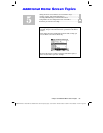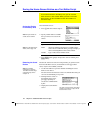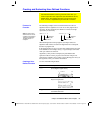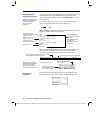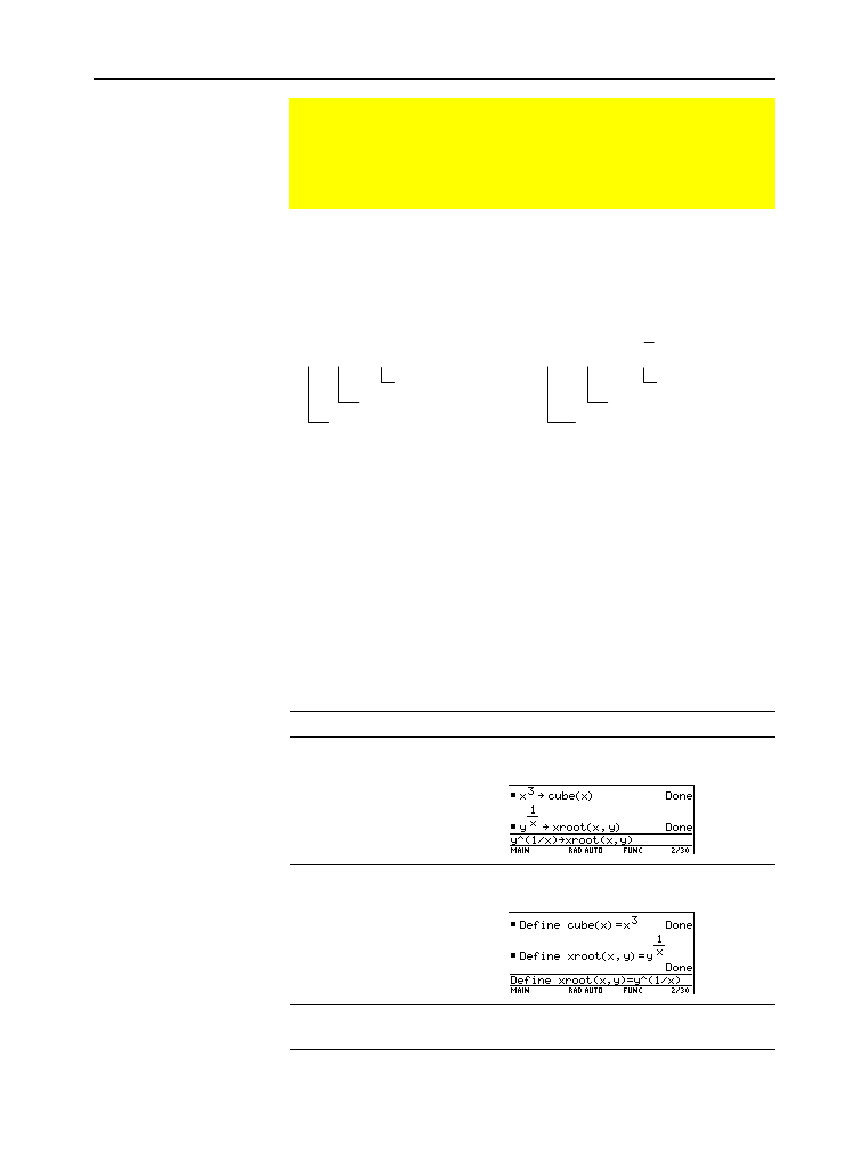
Chapter 5: Additional Home Screen Topics 97
05ADDLHM DOC TI
-
89/TI
-
92 Plus: Additional Home Screen To
p
ics (English) SusanGullord Revised:02/23/01 10:55 AM Printed: 02/23/012:13 PM Page 97 of
The following examples show user-defined functions with one
argument and two arguments. You can use as many arguments as
necessary. In these examples, the definition consists of a single
expression (or statement).
cube(x) = x
3
xroot(x,y) = y
1
x
When defining functions and programs, use unique names for
arguments that will not be used in the arguments for a subsequent
function or program call.
In the argument list, be sure to use the same arguments that are used
in the definition. For example,
cube(n) = x
ò
gives unexpected results
when you evaluate the function.
Arguments (
x
and
y
in these examples) are placeholders that
represent whatever values you pass to the function. They do not
represent the variables
x
and
y
unless you specifically pass
x
and
y
as
the arguments when you evaluate the function.
Use one of the following methods.
Method Description
§
Store an expression to a function name
(including the argument list).
Define
command Define a function name (including the argument
list) as an expression.
Program Editor
Refer to Chapter 17 for information on creating a
user-defined function.
Creating and Evaluating User-Defined Functions
User-defined functions can be a great time-saver when you
need to repeat the same expression (but with different values)
multiple times. User-defined functions can also extend your
TI
-
89 / TI
-
92 Plus’s capabilities beyond the built-in functions.
Format of a
Function
Note: Function names
follow the same rules as
variable names. Refer to
“Storing and Recalling
Variable Values” in
Chapter 2.
Creating a User-
Defined Function
Function name
Argument list
Definition
Function name
Argument list
Definition







